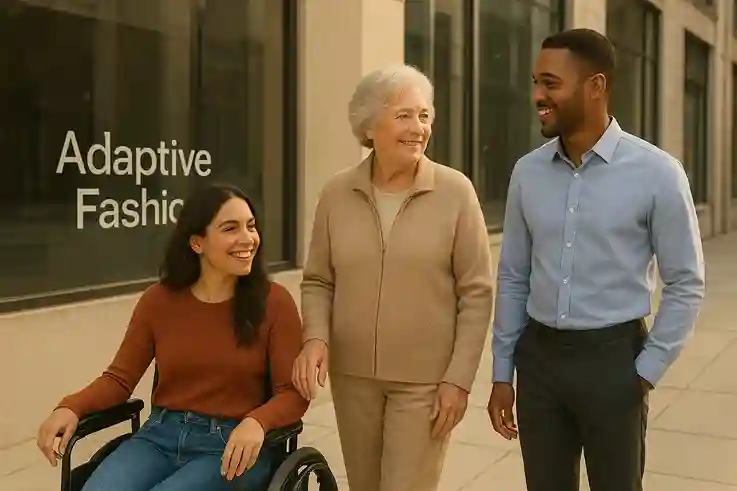What is adaptive fashion? At its core, it is clothing designed to meet diverse needs while celebrating personal style. Unlike traditional apparel, adaptive fashion focuses on accessibility, comfort, and dignity, making it easier for people of all abilities to dress independently.
For example, consider Maya, a college student who uses a wheelchair. Getting dressed each morning used to be stressful, often requiring help from a caregiver. When she discovered adaptive jeans with side openings and magnetic closures, her daily routine transformed. What once felt like a challenge became a moment of confidence and independence. Stories like Maya’s highlight why adaptive fashion matters today. In a world that often overlooks accessibility, these designs provide more than convenience — they restore dignity, spark joy, and empower self-expression.
By blending function with style, adaptive fashion represents transformation in the truest sense. It shifts the narrative from limitation to possibility, giving individuals the freedom to express who they are with confidence and pride.
What Is Adaptive Fashion?
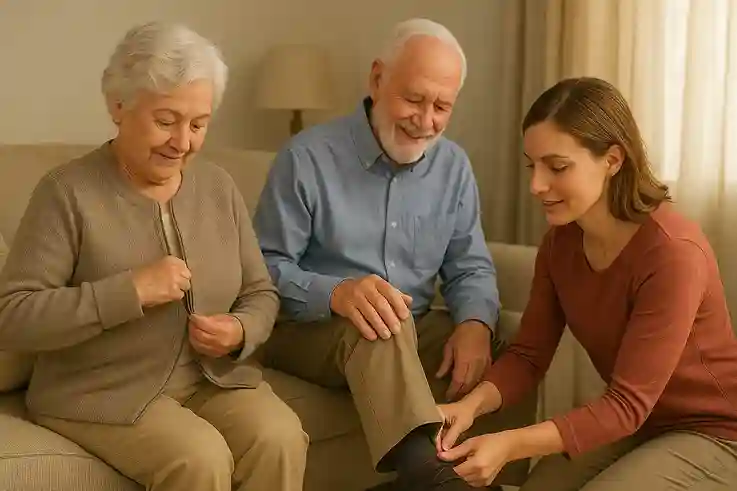
Adaptive fashion is clothing designed to make dressing easier, more comfortable, and more inclusive for people with different needs. Instead of forcing individuals to adjust to traditional styles, adaptive clothing adjusts to them.
The core features set it apart from standard fashion. Many designs use adjustable closures like Velcro, magnets, or side zippers instead of tiny buttons. Fabrics are often sensory-friendly, soft, and stretchable, reducing irritation for sensitive skin. Cuts and tailoring prioritize ease of movement, making clothing more practical for daily wear while still looking stylish.
It is called a style revolution because adaptive fashion breaks long-standing barriers in the clothing industry. Fashion has often excluded people with disabilities, seniors, and those with mobility challenges. Adaptive design changes that by proving style and accessibility can coexist. It’s not simply about meeting basic needs — it’s about dignity, empowerment, and the freedom to express individuality through clothing.
The Rise of Adaptive Fashion
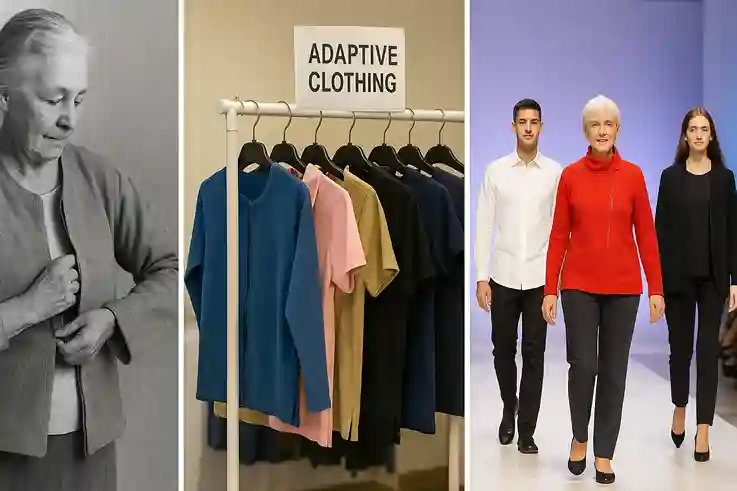
Adaptive clothing is not entirely new. For decades, caregivers and medical suppliers created practical garments to help individuals with mobility or health challenges. These early versions focused almost entirely on function, often resembling hospital wear rather than everyday fashion. While they served a purpose, they rarely offered style or personal expression.
Growing Demand in Recent Years
In recent years, demand for adaptive fashion has expanded rapidly. Greater awareness of disability rights, aging populations, and a push for inclusive design have fueled this growth. Shoppers today expect more than practicality — they want clothing that reflects identity, personality, and dignity. This shift has encouraged designers and retailers to explore adaptive lines that balance function and style.
A Cultural Shift Toward Inclusivity
Fashion is no longer just about trends; it is about representation. Campaigns that highlight diversity in ability, age, and body type are gaining momentum. The cultural conversation now recognizes that inclusivity is not optional — it is essential. Adaptive fashion is part of this larger movement, signaling a future where clothing truly reflects the variety of human experience.
Why Adaptive Fashion Matters
Adaptive fashion is more than clothing — it is freedom stitched into fabric. For many, traditional garments present hidden challenges: buttons that are too small to grip, zippers that require fine motor skills, or seams that irritate sensitive skin. Adaptive designs remove these barriers. The result is not just convenience but confidence. Clothing that is easy to wear restores independence and turns daily dressing into a positive, empowering act.
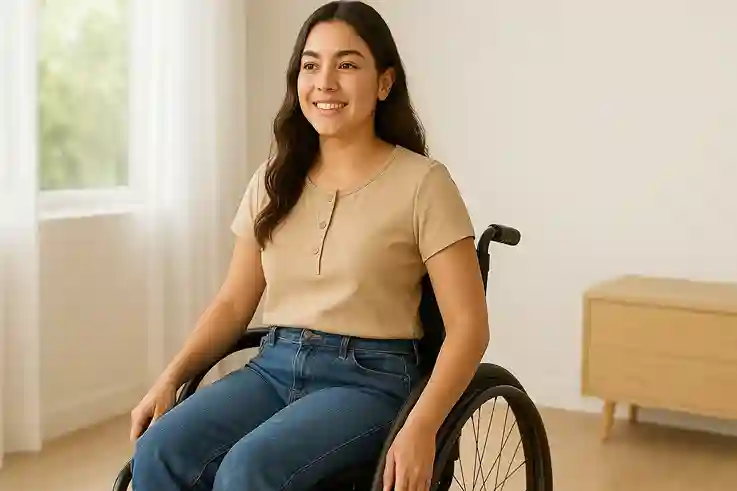
Empowering Dignity, Freedom, and Confidence
Wearing what you choose is one of the simplest yet strongest forms of self-expression. Clothing tells the world who you are before you even speak. For many people with limited mobility or specific physical challenges, this choice was often taken away. Adaptive fashion changes that.
Dignity
Is at the heart of adaptive fashion. When individuals can dress themselves, they gain privacy and independence in one of life’s most personal routines. For someone who once needed help with every button or zipper, being able to get ready without assistance is a powerful act of self-respect. It transforms clothing from a reminder of limitations into a source of pride.
Freedom
Freedom comes from no longer being bound by traditional designs that exclude. Adaptive fashion reduces reliance on caregivers for daily dressing, offering independence in an area that deeply affects confidence. A teenager fastening their own adaptive sneakers or an older adult slipping into magnetic-closure shirts experiences freedom in a very real sense.
Confidence
It grows naturally from these changes. When someone can step into a classroom, workplace, or social setting dressed in clothing that feels both comfortable and stylish, they carry themselves differently. They no longer feel singled out by medical-looking garments but instead blend seamlessly into the world of fashion. This builds pride in personal identity, empowering people to show up as their true selves.
Adaptive fashion is not charity or compromise — it is empowerment stitched into fabric. It allows people to reclaim dignity, embrace freedom, and walk forward with confidence.
Who Benefits from Adaptive Fashion
The reach of adaptive clothing is far greater than most imagine. It serves a diverse community with unique needs, proving that fashion can truly be for everyone.

People with disabilities
Are at the heart of this movement. Traditional clothing often limits choice or creates unnecessary challenges. Adaptive designs address these obstacles directly. For someone using a wheelchair, pants with side openings make dressing less time-consuming. For individuals with limited dexterity, magnetic buttons replace tiny fasteners that cause daily frustration. These thoughtful innovations allow people to focus on living, not struggling with clothing.
Seniors
Are another group that benefits greatly. Aging brings natural changes in strength, flexibility, and mobility. Clothing that once felt simple may become exhausting to wear. Adaptive garments reduce these stresses through simplified closures, elastic waistbands, and soft, breathable fabrics. Instead of choosing between comfort and style, seniors can enjoy both. This helps them maintain independence longer and promotes a sense of dignity in everyday life.
Caregivers
They experience relief through adaptive clothing. Dressing another person can be physically demanding and emotionally sensitive. Adaptive designs make the process faster, safer, and less stressful for both the caregiver and the individual. A magnetic shirt, for example, can transform a 15-minute struggle into a smooth, respectful experience. These changes not only save time but also reduce strain, preserving positive relationships.
Together, these groups represent millions across the world. Adaptive fashion does more than meet practical needs — it restores choice, confidence, and identity. It allows every individual, regardless of circumstance, to participate in fashion on their own terms. That is why adaptive fashion matters: it is clothing with purpose, designed for human dignity.
Key Features of Adaptive Clothing
Easy Fastenings
One of the most recognizable features of adaptive fashion is simplified fastenings. Traditional buttons, tiny zippers, and laces can create frustration for people with limited dexterity. Adaptive clothing replaces them with magnets, Velcro strips, or side-opening zippers. These features make dressing faster, less stressful, and more independent without sacrificing style.
Comfort-Focused Fabrics
Clothing is meant to be lived in, not just worn. Adaptive fashion often uses soft, breathable, and stretchable fabrics that minimize skin irritation. For people with sensory sensitivities, seamless construction and tag-free designs reduce discomfort. Comfort becomes a priority without compromising durability or elegance.
Mobility-Friendly Cuts and Designs
Adaptive clothing is shaped with movement in mind. Wider necklines, side openings, and adjustable waistbands make garments easier to put on and take off. Pants may feature higher backs for wheelchair users, while tops are tailored to prevent bunching or pulling. These thoughtful cuts respect body positioning and mobility needs while maintaining a natural look.
Stylish Yet Functional Designs
For too long, accessible clothing looked medical or clinical. Adaptive fashion challenges that perception by proving that function can also be fashionable. Bold patterns, modern cuts, and trend-aware styling allow individuals to dress in ways that express personality. The goal is not just to solve a problem but to celebrate individuality through design.
Traditional vs. Adaptive Clothing
| Feature | Traditional Clothing | Adaptive Clothing |
|---|---|---|
| Fastenings | Buttons, small zippers, laces (difficult to handle) | Magnets, Velcro, side zippers (easy to use) |
| Fabrics | Standard materials, may irritate sensitive skin | Soft, stretchable, sensory-friendly fabrics |
| Design Cuts | One-size cuts, limited mobility support | Mobility-focused tailoring, adjustable openings |
| Style | Often prioritizes looks over function | Stylish designs with equal focus on function |
The table shows how adaptive clothing improves on traditional designs. It combines function with style, making dressing easier, more comfortable, and empowering.
Inspiring Stories of Impact
A Student’s Confidence Restored
Maya, a college student who uses a wheelchair, always dreaded the start of her mornings. Something as routine as getting dressed often turned into a long and frustrating process. Traditional jeans were stiff, uncomfortable, and nearly impossible to manage on her own. Buttoned shirts added another layer of difficulty, often requiring her caregiver’s constant assistance. Each morning left her feeling dependent, and at times, disconnected from the independence her peers enjoyed.
Everything shifted when Maya discovered adaptive clothing. Side openings on pants and discreet magnetic fastenings on shirts replaced the small, stubborn buttons and zippers that once slowed her down. For the first time, she dressed herself entirely before class without outside help. That freedom was more than a time-saver — it was a turning point.
Suddenly, Maya walked into her lectures with a new kind of confidence. She no longer worried about being late or feeling different from others. Dressing independently allowed her to express her own style and identity, something she had long felt was out of reach. To her, adaptive fashion was not just about convenience — it was about reclaiming dignity, independence, and a sense of belonging on campus.
A Professional’s Independence at Work
James, a young professional with limited dexterity, faced a unique challenge each morning. What should have been a simple routine — buttoning up a shirt — often stretched into a frustrating battle. Traditional office attire left him relying on others for help, making something as small as getting ready for work feel like a daily reminder of his limitations. He worried about arriving late to meetings, missing social gatherings, or appearing unprofessional simply because of clothing.
The discovery of adaptive dress shirts completely changed his mornings. Instead of tiny, rigid buttons, these shirts used hidden magnetic closures that looked polished but were effortless to fasten. For James, this innovation wasn’t just about convenience — it was about reclaiming control. He could now get dressed quickly, independently, and without stress.
With that freedom came something deeper: confidence. James no longer walked into the office preoccupied by the struggle of dressing. He felt sharp, prepared, and equal to his peers. As he put it, adaptive clothing gave him “a freedom I didn’t realize I was missing.” His story highlights how adaptive fashion is more than a design trend — it’s a movement that restores independence and dignity in everyday life.
A Senior’s Dignity Preserved
Evelyn, a retired teacher, had always taken pride in starting her mornings with care — selecting her outfits, buttoning her cardigans, and stepping into the day with confidence. But as arthritis gradually stiffened her hands, even the smallest movements became painful. What was once routine turned into a frustrating, exhausting process. Buttons felt impossible, zippers wouldn’t budge, and more often than not, she had to call on her daughter for help. Each time, Evelyn felt a little of her independence slipping away.
The introduction of adaptive clothing brought a quiet but powerful change. Cardigans designed with magnetic fastenings and trousers with easy-to-pull zippers replaced the difficult garments she once dreaded. For the first time in years, Evelyn could dress herself without strain or outside help.
To her, this wasn’t just about convenience — it was about dignity. Choosing her own outfits and preparing for the day on her own terms restored a sense of control she deeply missed. Adaptive fashion gave Evelyn not only comfort but also peace of mind, allowing her to begin her mornings with the same independence and self-assurance she valued throughout her teaching career.
These stories show how adaptive fashion changes lives in deeply personal ways. It’s more than clothing — it’s confidence, independence, and dignity woven into every design.
The Global Movement of Adaptive Fashion
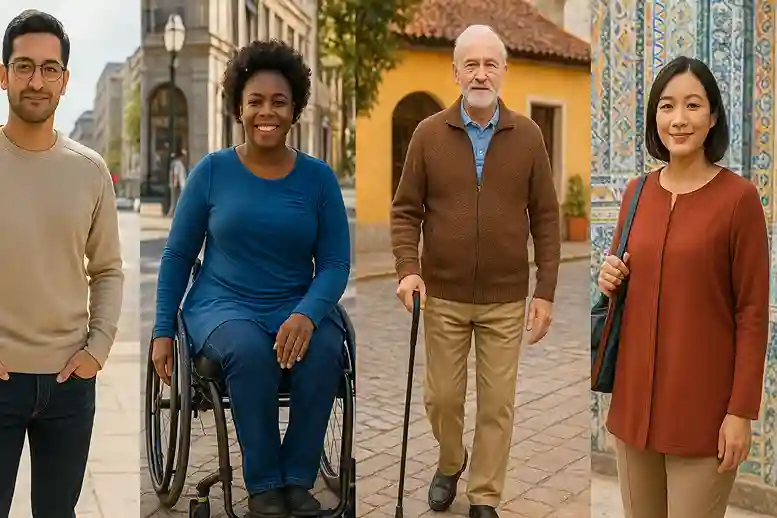
Regional Embrace of Adaptive Clothing
North America and Europe
Adaptive fashion is no longer confined to small niche markets; it has evolved into a worldwide movement. In North America and Europe, leading designers are integrating adaptive lines into mainstream fashion weeks, signaling that inclusivity belongs on the same runways as luxury collections. These regions have become pioneers, with retailers responding to consumer demand for functional yet stylish apparel.
Asia
In Asia, the conversation is gaining momentum, with designers reimagining traditional cultural dress — from adaptive saris in India to modified kimonos in Japan — to ensure heritage clothing remains accessible to all. Such efforts highlight the intersection of cultural identity and inclusivity.
Australia and South America
In Australia and South America, the push often comes from grassroots initiatives. Local communities and smaller labels are designing practical solutions in collaboration with people who wear them, ensuring functionality meets real needs. These region-specific efforts demonstrate that adaptive fashion is not a trend but a necessity being recognized on every continent.
Together, these regional strides reveal a global truth: fashion must serve everyone. Adaptive clothing is no longer seen as an afterthought, but as a symbol of inclusivity, empowerment, and universal style.
Adaptive Fashion Around the World
| Region | Key Adaptive Fashion Efforts |
|---|---|
| North America & Europe | Leading designers launch adaptive collections; inclusive fashion featured on major runways. |
| Asia | Traditional dress styles adapted for accessibility (e.g., saris, kimonos); growing market awareness. |
| Australia | Community-driven projects; smaller labels focus on practical, functional designs. |
| South America | Grassroots initiatives collaborate with local communities to meet real accessibility needs. |
Social Media and Awareness Campaigns
Social media has played a powerful role in spreading awareness of adaptive fashion. Hashtags, influencer stories, and viral campaigns have helped bring visibility to communities that were once overlooked. Videos showing real people dressing independently thanks to adaptive clothing have resonated with millions online. This digital momentum is reshaping public perception — proving that accessibility and style can coexist, and that inclusivity should be celebrated in fashion.
The Future of Adaptive Fashion
Trends Shaping Inclusive Style
Adaptive fashion is steadily moving beyond functional basics and entering the mainstream style conversation. Today’s designers are blending practical innovation with modern aesthetics, proving that clothing designed for accessibility can also reflect personal style.
Increasing collaborations between inclusive designers and established fashion houses highlight this shift, as adaptive lines appear alongside traditional collections. This evolution signals a future where adaptive wear is not confined to specialty stores but embraced in everyday retail spaces, making inclusivity a standard part of fashion rather than an exception.
Technology in Adaptive Wear
Emerging technologies are transforming the possibilities of adaptive fashion. 3D printing allows for custom-fit accessories and fasteners tailored to individual needs. Smart fabrics with moisture-wicking, temperature regulation, and sensory-friendly textures provide comfort for people with sensitive skin or sensory challenges. Innovations like voice-activated wearables and AI-driven size recommendations are on the horizon, making clothing even more accessible.
More Than a Passing Trend
What sets adaptive fashion apart is its long-term cultural impact. Unlike seasonal fads, it addresses a permanent need for millions of people. As populations age and awareness of disability rights grows, demand will only increase. Adaptive fashion is not simply a new category of clothing — it’s a redefinition of style itself, where inclusivity and empowerment are the foundation of design.
“For further reading on how adaptive fashion is entering mainstream retail, check out this detailed article from Forbes on inclusive clothing innovations.”
FAQs on What is Adaptive Fashion
Conclusion On What is Adaptive Fashion
Adaptive fashion is not just a response to practical challenges — it is a powerful reimagining of style, dignity, and human connection. For decades, clothing excluded millions by overlooking the daily realities of people with disabilities, seniors, and caregivers. Now, adaptive wear is reshaping that narrative. It transforms the act of dressing from a source of struggle into a source of empowerment, restoring freedom and confidence to countless lives.
What makes adaptive fashion so transformative is its ability to merge inclusivity with aesthetics. These designs prove that accessibility does not mean compromising on beauty or individuality. Instead, adaptive fashion celebrates diversity by giving people the tools to express themselves fully, whether through professional attire, cultural garments, or casual everyday wear.
The long-term impact is undeniable. As populations age and conversations around accessibility grow louder, the demand for adaptive clothing will only continue to expand. Designers and brands who embrace this shift are not chasing a fleeting trend but helping to define the future of fashion itself. In this future, inclusivity is no longer optional — it is the foundation of style.
So when we ask, “what is adaptive fashion?”, the answer extends beyond fabrics and fastenings. It is a global movement toward equality, empowerment, and self-expression. And as more voices join the conversation, adaptive fashion will stand not as a separate category, but as the standard — fashion designed for all.
Join the Conversation
Adaptive fashion is rewriting the rules of style, but the movement is still growing. Have you or someone you know experienced the impact of inclusive clothing? Share your thoughts, stories, or questions in the comments below — your voice can help shape a more inclusive future for fashion.

Silvia Heart is a lifestyle and wellness writer with a background in apparel and a degree in fashion. She blends creativity with practical insights, guiding readers toward intentional, balanced living. Through her approachable style and thoughtful storytelling, Silvia inspires her community to embrace both everyday joy and personal growth.
